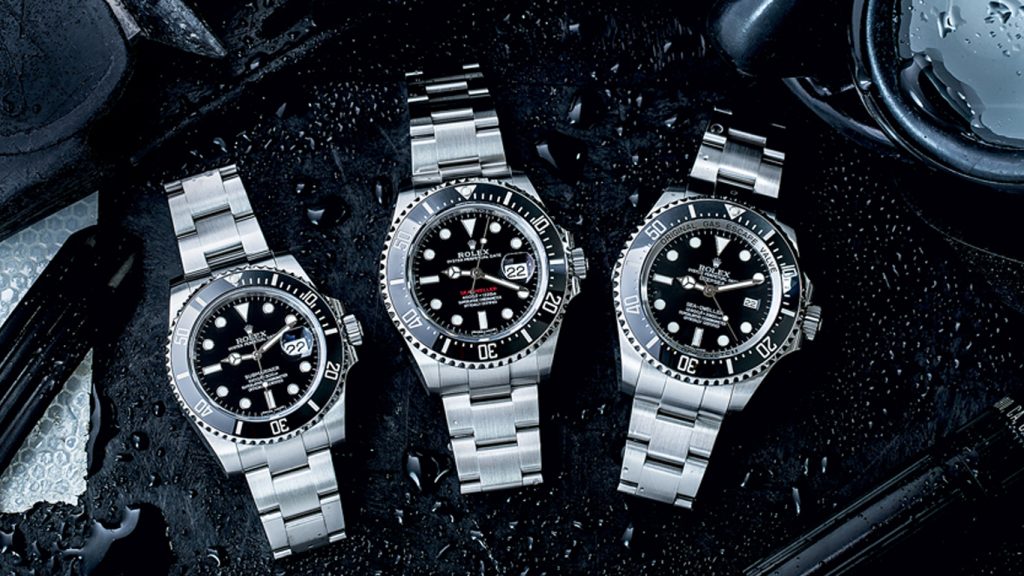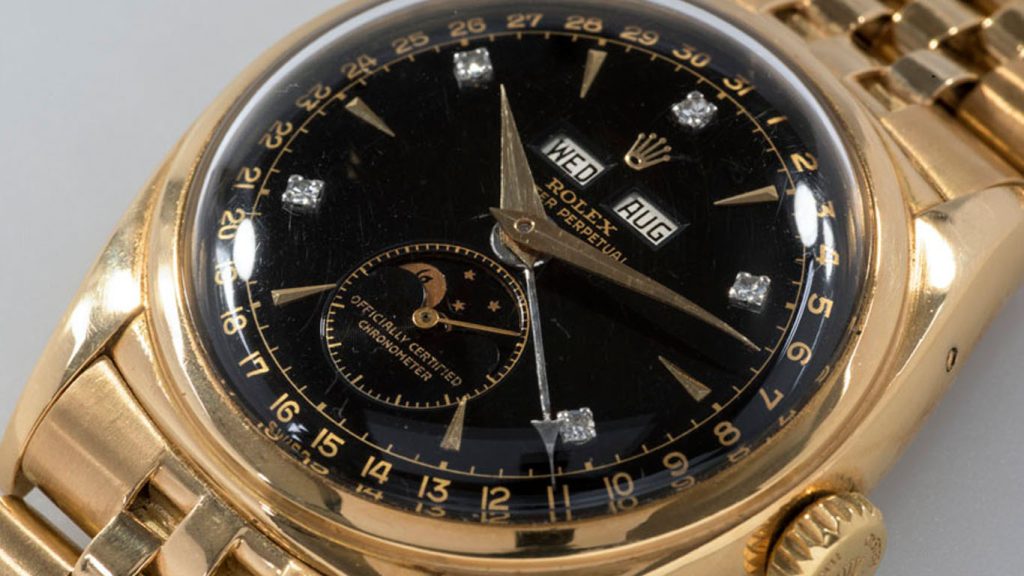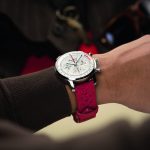Reason #1: Fame
Replica Rolex is clearly the most well-known among the world’s luxury watch brands. You’ve heard of it even if you’ve never heard anything about Omega or Breitling, or even Patek Philippe. Fundamentally there are two aaa quality replica Rolex customer groups – those who know a lot, and those who know very little. Aficionados buy Rolex for its extremely high quality. They may be less interested in extremely fine, complicated craftsmanship in favor of having the best all-around watch for daily wear. Other Rolex customers don’t know much about watches, only that Rolex is the best. For them the primary motivator is this: if you’re going to wear a watch, it’s got to be a Rolex. And this is a huge compliment for the manufacturer – because if even a person who knows nothing about watches views one specific brand as “Number One”, the company is doing something right.

Reason #2: Product quality
The basis for Rolex’s success is its extremely high product quality extending over the many years of its existence. Swiss movement replica Rolex watches show time accurately and are robust, sturdy and reliable. Maintaining consistently high quality with estimated annual production numbers of about three-quarters of a million pieces is an art unto itself. And it’s to Rolex’s advantage to omit unusual complications. It has no tourbillons, perpetual calendars or minute repeaters – not even movements with a large date display, power reserve indicator or alarm function. The company concentrates on what it does best, and improves the detail ongoing. This is true for the movements as well as for the case. You won’t find a rotating bezel that ratchets so cleanly and smoothly like the one on the Submariner or GMT-Master II from any of its competitors – even other high-end manufacturers with much more expensive products.

Reason #3: Everything a watch needs
The significance of the cheap fake Rolex UK name is linked to the fact that the brand introduced innovative features quite early on which have made the watch well-suited for everyday wear. In 1914 Rolex founder Hans Wilsdorf submitted a wristwatch movement to the renowned Kew-Teddington observatory for chronometer certification. Today the chronometer test (currently conducted by the Swiss institute COSC) has become a standard for in-house mechanical Rolex calibers. In 1927 the first water-resistant wristwatch was introduced and the automatic winding mechanism followed a couple of years later – because to ensure the water-resistance of a watch, it shouldn’t be necessary to pull the crown every day. These two features are reflected in the product name “Oyster Perpetual”, which decorates virtually every Rolex. The Datejust, introduced in 1945, was the first watch to combine all three features – automatic winding, water-resistant case and chronometer certificate. Together with its namesake date window, it has all the essentials.

Reason #4: Design and recognition
The everyday wearability of a watch is a function of its design. The round shape of a Rolex contributes to its water-resistance and its superior legibility. Add to this a central sweep seconds hand and Cyclops date magnifier (another Hans Wilsdorf invention). Existing collections are maintained and continuously improved over the years. This is supported by Rolex expert Percy Christian Schoeler, founder of the German-language internet portals Luxify and R-L-X-Forum: “Only very careful modifications to the iconic design of individual model collections over the decades have resulted in a high degree of recognition.” There are no sudden design shifts or leaps, and even case sizes are altered only very gradually. Typical design features like the grooved bezel, “Mercedes” hands, Cyclops magnifier and the Oyster bracelet are part of several different models and have rarely undergone change so a Datejust or a Submariner today looks very much like earlier models. It’s why it is always easy to recognize a Rolex from a distance. Watch expert Gisbert L. Brunner calls this the “10-meter rule” – and it’s not just the specialists who recognize them.

Reason #5: Stability in value
The moment you buy a car, it drops in value by half. This fact is true to a lesser extent for watches – except for Rolex. For the high-demand sport models in stainless steel at least (though this is a stickier situation for gold Oyster models and the elegant gold Cellini watches) it’s possible to get just a little less, or maybe even more, than the original purchase price. This is an attractive point for any customer – regardless of whether they are buying the watch for this particular reason or any other. It’s reassuring to know you’ve made a wise decision.

Reason #6: Auction prices
The price stability of used but still relatively new watches depends in great part on the high prices achieved regularly by older Rolex watches at auction. After Patek Philippe, Rolex is the next hottest brand. There are thousands of examples of auctioning success with Rolex watches over the last several decades. In some cases the prices have reached dizzying heights. Back in October, in fact, a Rolex Daytona owned by actor and racing enthusiast Paul Newman became the most expensive wristwatch ever sold at auction, netting $15.5 million at Phillips’ New York “Winning Icons” auction. This beat the previous record for the most expensive Rolex wristwatch ever sold, a Ref. 6062 with its triple date display (pointer date indicator, weekday and month in window openings) in the one-time variation with a black dial and diamond markers that once belonged to Bao Dai, the last emperor of Vietnam. It was sold this past May at Phillips in Geneva for more than SF5 million.

Reason #7: Artificial shortages
The pinnacle of desirability is achieved when the thing one wants is not available. The famous Daytona in steel is for many such an object of desire, ever since an early version appeared on the wrist of Hollywood star Paul Newman. Rolex brings approximately as many models into stores as it expects to sell. The result is long waiting lists. The (often unfruitful) hunt for the world’s most desirable watch only adds to the Rolex myth.

Reason #8: Marketing and communication
Rolex founder Hans Wilsdorf was a marketing genius. He chose a name that was easy to pronounce in many different languages and made sure this name was printed on the dial – not entirely common at a time when customer loyalty was to the dealer, not the manufacturer. Wilsdorf called his water-resistant watch the “Oyster” and gave a Rolex to a swimmer who planned to swim the English Channel (which she wore around her neck). The story landed him a full-page advertisement on the front page of the Daily Mail. There were also ads in magazines in which a young actress submerged her hand and wrist (and watch!) into a fishbowl. Rolex marketing approaches have a more subtle touch. Beginning in the late 1970s, it emphasizes its presence in prestigious sports such as tennis and golf, automobile racing, equestrian sports and sailing. Rolex has been the “official timekeeper” at Wimbledon since 1978, at the U.S. Open since 1980, and for Formula One since 2013, clearly showing that Rolex represents sports and success.

Reason #9: Myth of the monolith
Rolex always makes a solid and composed impression. The company stays true to its proven methods and chooses to make continuous improvements instead of pursuing the new and different. Part of the brand’s mythology rests on the fact that Rolex did not jump on the quartz-watch bandwagon in the 1970s (even though there were some quartz Rolex watches). The company does not produce complicated watches such as tourbillons or repeaters, only very rarely launches new collections, and stays away from online sales. New technologies such as silicone parts in its movements are developed very slowly and used very conservatively – smartwatches or “smart” features are unthinkable. This makes the brand predictable for the customer and also protects the brand from missteps. The company does not make a big deal when introducing new products at Baselworld each spring. While other manufacturers boldly announce world records, hold press conferences featuring celebrities, or present 70 brand-new products, Rolex quietly works on detailed improvements. Larger cases, improved movements, ceramic bezels and now and again a new color – even innovations such as these are discussed among Rolex fans hotly and not without controversy. And regarding personal contact, Rolex often comes across as inscrutable and “oyster-like”– beginning with its production facilities for watches in Geneva and for movements in Biel, which customers and journalists rarely get to see from the inside, and ending with the CEO who, as a rule, gives no interviews.


